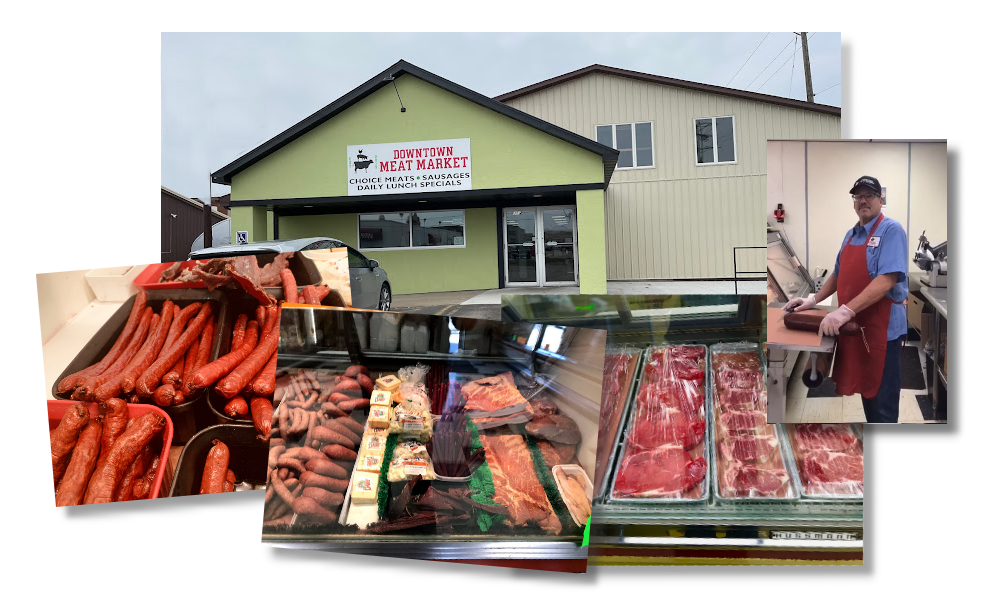Get the most effective Deals on Fresh Meat at Bagley Farms Meat Market Edwardsville IL
Get the most effective Deals on Fresh Meat at Bagley Farms Meat Market Edwardsville IL
Blog Article
Reveal the Art of the Butcher's Cut in a Modern Meat Market
In the ever-evolving landscape of modern-day meat markets, the butcher's cut has transcended its traditional roots, merging age-old craftsmanship with modern techniques. Today's butchers are not just processors of meat; they are knowledgeable artisans who highlight sustainability and moral sourcing. Their expertise in choose and preparing cuts customized to details cooking demands provides an unrivaled eating experience. Yet, what absolutely establishes the modern butcher apart is their ability to create a deeper link in between customers and the beginnings of their meat. How do these masters equilibrium tradition with advancement, and what implications does this have for the future of meat consumption?
Advancement of Butchery Methods
The development of butchery methods reflects an abundant tapestry of innovation and adaptation driven by improvements in innovation, adjustments in customer demand, and a much deeper understanding of meat scientific research. Historically, butchery was a craft gave through generations, with techniques refined over centuries to make best use of yield and taste. However, the commercial change introduced automation, transforming conventional practices and allowing massive handling.
The mid-20th century saw butchery methods additionally improved by scientific insights into muscle biology and meat aging, enhancing both tenderness and taste. Advancements like vacuum product packaging and refrigeration expanded item shelf-life, permitting butchers to branch out offerings and enhance quality assurance. This duration also marked the surge of specialized devices, such as band saws and meat slicers, which enhanced accuracy and efficiency in meat handling.

The 21st century has actually introduced digital technology right into the butchery world. Computerized systems currently aid in tracking pet provenance and enhancing cuts to fulfill details consumer preferences. In addition, a revival in artisanal butchery has actually arised, mixing typical skills with modern-day knowledge to accommodate consumers seeking honest and sustainable meat choices. This evolution highlights a dynamic interplay in between tradition and technology, meeting contemporary needs while protecting the craft's heritage.
Comprehending Meat Cuts
Comprehending the details of meat cuts is vital for both butchers and customers seeking high quality and worth. For butchers, exact cuts reflect ability and respect for the craft, making certain marginal waste and optimum return.

Comprehending muscular tissue structure is important; muscle mass used extra regularly by the animal often tend to be tougher and are best fit for sluggish food preparation techniques, while less-used muscles, like those located in the loin, are much more tender and ideal for cooking or roasting. Familiarity with these distinctions empowers customers to make educated choices, improving their cooking undertakings.
Selecting Quality Meat
Selecting the right meat involves more than simply choosing an aesthetically appealing item from the screen. The art of picking high quality meat requires a critical eye and expertise of specific characteristics that represent freshness and excellence.
Secondly, consider the marbling, which describes the white flecks of fat within the muscle. Appropriate marbling is a key sign of tenderness and taste, as it melts throughout cooking, enhancing the meat's juiciness. Remember, higher marbling typically associates with exceptional top quality cuts, such as USDA Prime.
Appearance is an additional essential factor; meat needs to really feel firm to the touch, not slimed or excessively soft. In addition, be conscious of the scent. Fresh meat should have a clean, neutral scent, free from any kind of sour or off-putting odors.
Coupling Cuts With Cooking Methods

Alternatively, harder cuts like brisket and chuck roast are rich in collagen, which damages down into gelatin when cooked slowly. These cuts are perfect for braising or sluggish roasting, allowing the meat to tenderize gradually and develop deep, complicated tastes. Cuts such as short ribs and pork shoulder make out well with slow-cooking methods, where extended cooking times transform their durable structures right into delicious dishes.
Lamb shanks and oxtail, which call for extended cooking to tenderize, are best prospects for cooking or sluggish simmering. These methods coax out abundant, hearty tastes while maintaining dampness. By comprehending the one-of-a-kind features of each cut, cooks and home chefs alike can elevate their cooking developments, making sure each meal is both satisfying and memorable.
The Butcher's Role Today
Browsing the progressing landscape of the modern meat market, the butcher's role today extends past plain prep work of cuts. Contemporary butchers are culinary craftsmens, teachers, and supporters for sustainable techniques.
Along with crafting specific cuts, butchers currently involve straight with clients, using cooking recommendations and customizing options to suit specific demands and choices. Their proficiency in meat aging, marbling, and taste accounts empowers customers to make enlightened choices, enhancing their cooking experiences. This personalized solution exemplifies the butcher's evolving function as a trusted advisor in the cooking area.
In addition, butchers are critical in minimizing waste, using entire animals to produce diverse items such as sausages and stocks. This detailed technique not just respects the pet yet also straightens with contemporary sustainability goals. By doing find more info this, the contemporary butcher embodies both tradition and advancement, adjusting to an ever-changing market while maintaining the artistry and integrity of their craft.
Final Thought
Mastery in recognizing diverse meat cuts and top quality signs empowers butchers to supply educated suggestions, aligning particular cuts with ideal cooking approaches. By recognizing historical practices while welcoming modern needs, the butcher's function continues to be essential in today's advanced meat market.
Report this page